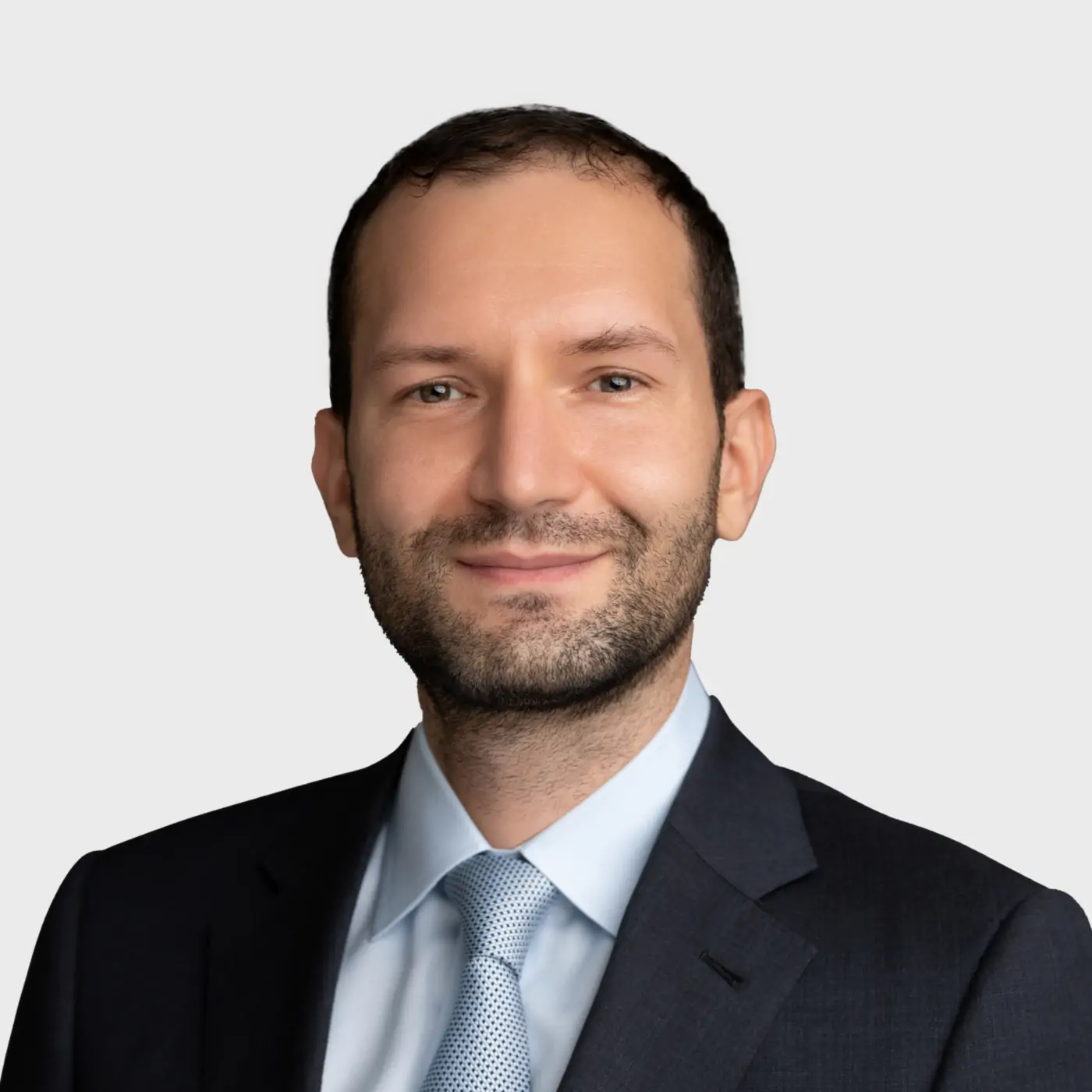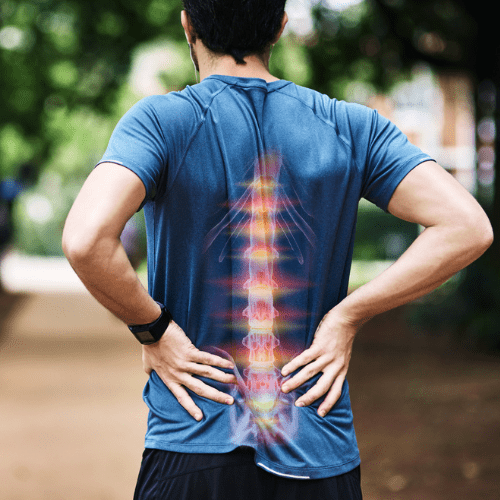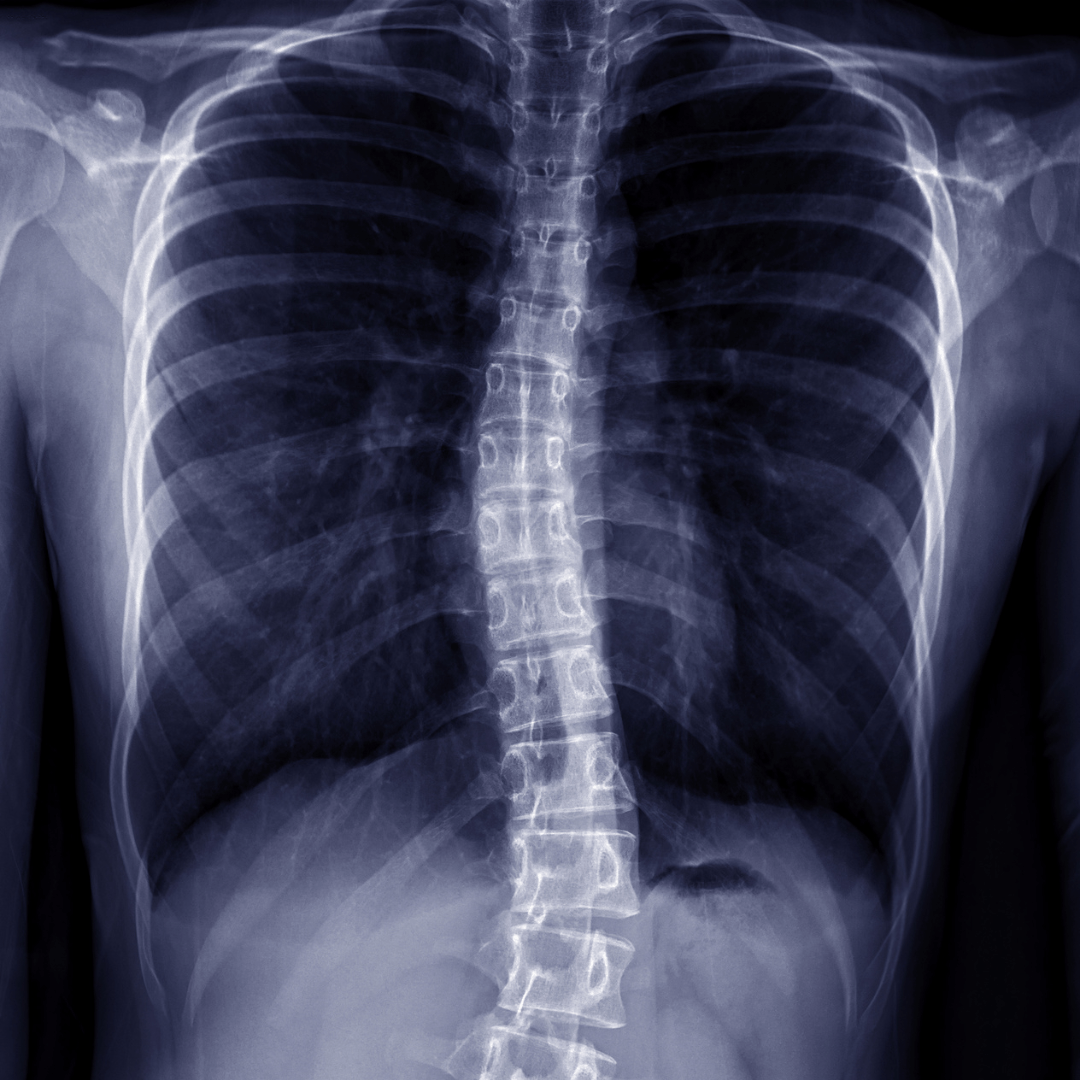Where It Hurts: My Back (Thoracic and Lumbar Spine)
Most people will have low back pain at some point in their life, whether from an injury, a misstep, or improperly lifting a heavy object, or even without an inciting event or trauma. While acute low back pain may go away on its own, there are many chronic conditions that cause back pain to linger or even increase over time.
From irregular spinal curvatures and traumatic injuries to the normal wear and tear of our spinal structures, back pain comes in all shapes and sizes. Learn more about conditions that cause back pain and how the spine experts at Orthopaedic Associates of Manhasset can help.
Common Back Injuries and Spinal Conditions
We see people with all types of back pain. The most common injuries and conditions we treat are:
- Arthritis: Arthritis causes pain, swelling, and loss of mobility in your vertebrae. Arthritis can happen over time as your cartilage wears out (osteoarthritis). You’re more at risk for developing arthritis if you’ve had a prior back injury.
- Bulging and herniated discs: As we get older, the discs that cushion the bones of our spine get less flexible. They can even rupture. This can pinch the nerves and cause back pain that radiates down your buttocks into your thighs and numbness and tingling in the legs.
- Degenerative disc disease: Degenerative disc disease is when your spinal discs wear down. When this cushioning erodes, it can be painful and can cause other problems like pinched nerves and scoliosis.
- Herniated Discs: Herniated discs also known as slipped discs in the lower back result in pain, numbness, and/or weakness that travels down the leg known as radiculopathy.
- Kyphosis: Kyphosis is a spinal disorder where an abnormal curvature of the spine results in a rounding of the upper back and hunched posture.
- Pinched nerves and sciatica: With age, your spinal canal (what your spinal cord and nerves run through) starts to thicken and narrow. This puts pressure on the nerves, including the sciatic nerve that runs down the back of your leg. Depending on which nerve is compressed, pain can also radiate down the front of your leg (thigh) and cause numbness and muscle weakness.
- Sciatica: Sciatica is a very broad term describing nerve pain, not a specific diagnosis. Sciatic pain occurs when a lower lumbar or sacral nerve root in the lumbar spine is compressed.
- Scoliosis: Scoliosis is an abnormal sideways curve that causes posture and alignment issues and breathing problems later in life. Usually, the curves develop in the adolescent years, and we treat them through bracing and surgery. Sometimes adults can also develop a type of scoliosis (degenerative or de novo scoliosis) that can cause back and leg pain.
- Spinal cord injuries: The term ‘spinal cord injury’ refers to damage to the spinal cord resulting from trauma (e.g., a motor vehicle accident), disease (cancer), or degeneration.
- Spinal stenosis: Spinal stenosis is a common condition where the spinal canal, which contains the nerve roots and spinal cord, becomes narrowed leading to nerve compression which can cause pain, numbness, or weakness in the buttocks or legs.
- Spondylolisthesis: In spondylolisthesis, one of the bones in your spine — called a vertebra — slips forward and out of place. In some people, this causes no symptoms at all. Others may have back and leg pain that ranges from mild to severe.
- Spondylolysis: Spondylolysis is a weakness or stress fracture in one of the vertebrae, the small bones that make up the spinal column. The most common vertebra affected is L5.
- Sprains and strains: The soft tissues around your spine (muscles, tendons, and ligaments) can get strained or overstretched. This can happen because of poor posture, a fall, or other sudden movement. A sprain or a strain can cause loss of mobility but usually gets better with rest.
- Vertebrae fractures: Some fractures are serious and happen because of trauma. But we often see less severe (though still painful) fractures that happen with age, from minor falls, and in people with osteoporosis. These are sometimes called compression fractures and are very treatable.
We see people with all types of back pain. The most common injuries and conditions we treat are:
- Arthritis: Arthritis causes pain, swelling, and loss of mobility in your vertebrae. Arthritis can happen over time as your cartilage wears out (osteoarthritis). You’re more at risk for developing arthritis if you’ve had a prior back injury.
- Bulging and herniated discs: As we get older, the discs that cushion the bones of our spine get less flexible. They can even rupture. This can pinch the nerves and cause back pain that radiates down your buttocks into your thighs and numbness and tingling in the legs.
- Degenerative disc disease: Degenerative disc disease is when your spinal discs wear down. When this cushioning erodes, it can be painful and can cause other problems like pinched nerves and scoliosis.
- Herniated Discs: Herniated discs also known as slipped discs in the lower back result in pain, numbness, and/or weakness that travels down the leg known as radiculopathy.
- Kyphosis: Kyphosis is a spinal disorder where an abnormal curvature of the spine results in a rounding of the upper back and hunched posture.
- Pinched nerves and sciatica: With age, your spinal canal (what your spinal cord and nerves run through) starts to thicken and narrow. This puts pressure on the nerves, including the sciatic nerve that runs down the back of your leg. Depending on which nerve is compressed, pain can also radiate down the front of your leg (thigh) and cause numbness and muscle weakness.
- Sciatica: Sciatica is a very broad term describing nerve pain, not a specific diagnosis. Sciatic pain occurs when a lower lumbar or sacral nerve root in the lumbar spine is compressed.
- Scoliosis: Scoliosis is an abnormal sideways curve that causes posture and alignment issues and breathing problems later in life. Usually, the curves develop in the adolescent years, and we treat them through bracing and surgery. Sometimes adults can also develop a type of scoliosis (degenerative or de novo scoliosis) that can cause back and leg pain.
- Spinal cord injuries: The term ‘spinal cord injury’ refers to damage to the spinal cord resulting from trauma (e.g., a motor vehicle accident), disease (cancer), or degeneration.
- Spinal stenosis: Spinal stenosis is a common condition where the spinal canal, which contains the nerve roots and spinal cord, becomes narrowed leading to nerve compression which can cause pain, numbness, or weakness in the buttocks or legs.
- Spondylolisthesis: In spondylolisthesis, one of the bones in your spine — called a vertebra — slips forward and out of place. In some people, this causes no symptoms at all. Others may have back and leg pain that ranges from mild to severe.
- Spondylolysis: Spondylolysis is a weakness or stress fracture in one of the vertebrae, the small bones that make up the spinal column. The most common vertebra affected is L5.
- Sprains and strains: The soft tissues around your spine (muscles, tendons, and ligaments) can get strained or overstretched. This can happen because of poor posture, a fall, or other sudden movement. A sprain or a strain can cause loss of mobility but usually gets better with rest.
- Vertebrae fractures: Some fractures are serious and happen because of trauma. But we often see less severe (though still painful) fractures that happen with age, from minor falls, and in people with osteoporosis. These are sometimes called compression fractures and are very treatable.
Physicians

- Spine
Practicing in:
Great Neck
- Spine
Practicing in:
Great Neck and Huntington
- Pain Management
- Physiatry
- Spine
Practicing in:
Great Neck
- Pain Management
- Physiatry
- Spine
Practicing in:
Great Neck
- Pain Management
- Physiatry
- Spine
Practicing in:
Great Neck and Huntington








